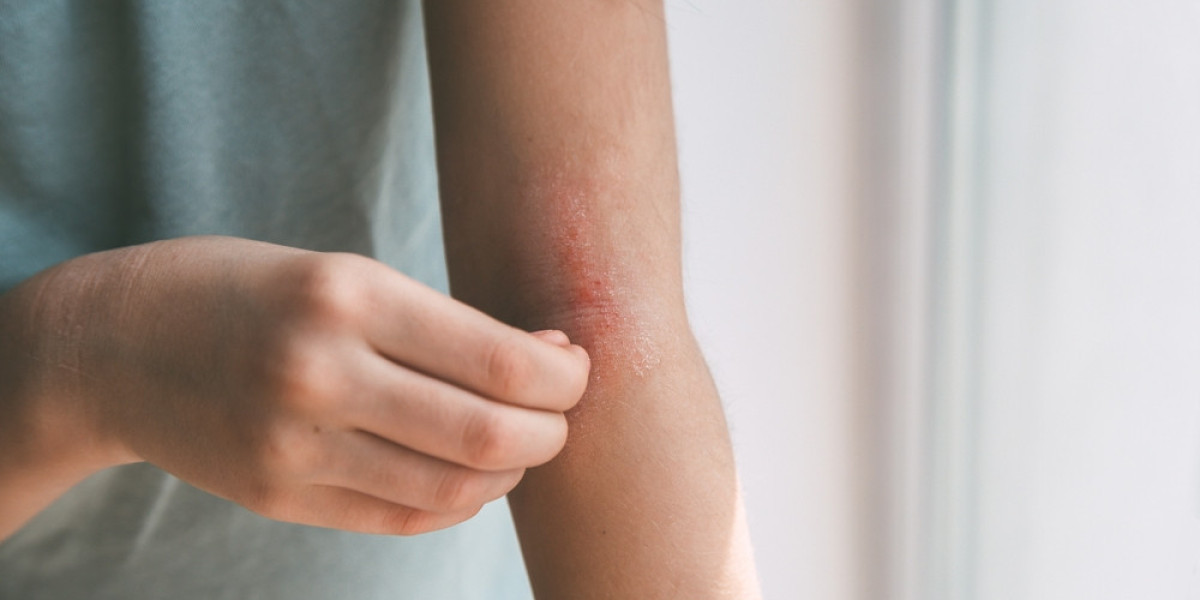Have you ever noticed your skin becoming unusually dry, itchy, and cracked, especially during the colder months? If so, you might be dealing with xerotic eczema. This common skin condition can be both uncomfortable and frustrating. In this guide, we'll explore what xerotic eczema is, how to recognize its symptoms, understand its causes, and discuss effective prevention and treatment strategies to help you manage and alleviate its effects.
What Exactly is Xerotic Eczema?
Xerotic eczema, also known as asteatotic eczema or eczema craquelé, is a form of eczema characterized by abnormally dry, itchy, and cracked skin. The term "xerotic" stems from "xerosis," which means dryness. Unlike other types of eczema that may be triggered by allergens or irritants, xerotic eczema primarily results from excessive dryness that compromises the skin's protective barrier. This condition is particularly prevalent during the winter months when humidity levels drop, leading to what some refer to as "winter itch."
Recognizing the Symptoms: How Does Xerotic Eczema Manifest?
Identifying xerotic eczema involves observing specific changes in your skin's appearance and texture. Common symptoms include:
- Dry, scaly patches: Affected areas often develop rough, scaly patches that may resemble cracked porcelain or a dry riverbed.
- Itching: A persistent itch is a hallmark of xerotic eczema, which can range from mild to severe, often intensifying at night.
- Redness and inflammation: The skin may appear red or inflamed, indicating irritation.
- Fissures or cracks: Severe dryness can lead to painful cracks or fissures in the skin, increasing the risk of infection.
These symptoms commonly appear on the shins but can also affect the arms, thighs, and torso. Individuals may experience varying degrees of these symptoms, and factors like age, climate, and overall skin health can influence their severity.
Who is at Risk? Understanding the Causes and Risk Factors
Xerotic eczema arises when the skin loses its natural moisture, leading to dryness and irritation. Several factors contribute to this condition:
- Age: Older adults are more susceptible due to the skin's diminished ability to retain moisture as it ages.
- Climate: Living in areas with low humidity, especially during winter, can exacerbate skin dryness.
- Frequent bathing: Taking long, hot showers or baths can strip the skin of its natural oils, leading to dryness.
- Harsh soaps and detergents: Using products that remove moisture from the skin can contribute to xerotic eczema.
- Underlying health conditions: Certain medical conditions, such as hypothyroidism or malnutrition, can increase the risk.
Understanding these risk factors is crucial for prevention and management. By identifying and modifying these elements, individuals can reduce their likelihood of developing xerotic eczema.
Prevention Strategies: How Can You Keep Xerotic Eczema at Bay?
Preventing xerotic eczema involves adopting habits that maintain skin hydration and protect the skin barrier. Here are some practical tips:
- Limit bath time: Keep showers or baths to no more than 15 minutes using warm, not hot, water.
- Use gentle cleansers: Opt for mild, fragrance-free soaps to avoid stripping natural oils from your skin.
- Moisturize regularly: Apply a high-quality moisturizer immediately after bathing and throughout the day to lock in moisture.
- Use a humidifier: Adding moisture to the air in your home can help prevent skin from drying out, especially during winter.
- Protect your skin: Wear appropriate clothing to shield your skin from harsh weather conditions and avoid direct contact with heating sources like fireplaces or radiators.
By incorporating these strategies into your daily routine, you can significantly reduce the risk of developing xerotic eczema and maintain healthier skin.
Effective Treatment Options: What Are Your Choices?
If you're already experiencing symptoms of xerotic eczema, several treatment options can help manage and alleviate discomfort:
- Over-the-counter moisturizers: Products containing ingredients like glycerin, ceramides, or hyaluronic acid can help restore moisture to the skin. For instance, CeraVe Moisturizing Cream is often recommended for its hydrating properties.
- Prescription treatments: In cases where over-the-counter products aren't sufficient, a dermatologist may prescribe topical corticosteroids to reduce inflammation and itching.
- Wet wrap therapy: Applying a damp layer of clothing over a moisturizer can enhance skin hydration and absorption of topical treatments.
- Avoid irritants: Identify and eliminate exposure to substances that may aggravate your skin, such as certain fabrics, soaps, or environmental factors.
It's essential to consult with a healthcare professional to determine the most appropriate treatment plan tailored to your specific needs.
Living with Xerotic Eczema: Tips for Daily Management
Managing xerotic eczema requires ongoing attention to your skin's needs. Here are some daily management tips:
- Choose appropriate clothing: Wear soft, breathable fabrics like cotton to minimize skin irritation.
- Maintain a consistent skincare routine: Regularly apply moisturizers and avoid skipping skincare steps, even when symptoms improve.
- Monitor environmental factors: Keep your living environment at a comfortable humidity level and avoid sudden temperature changes.
- Stay hydrated: Drinking adequate water supports overall skin health and hydration.
You may also read: Creating an Effective Epilepsy Seizure Action Plan: A Step-by-Step Guide
In summary, xerotic eczema is a skin condition characterized by extreme dryness, itching, and cracking, often exacerbated by factors like cold weather and frequent hot showers. To manage and prevent this condition, it's essential to maintain proper skin hydration through regular moisturizing, gentle cleansing, and environmental adjustments such as using humidifiers. By incorporating these strategies into your daily routine, you can effectively alleviate symptoms and improve your skin's health.
Additionally, ongoing research and clinical trials in atopic dermatitis are exploring new treatments to enhance patient outcomes.







